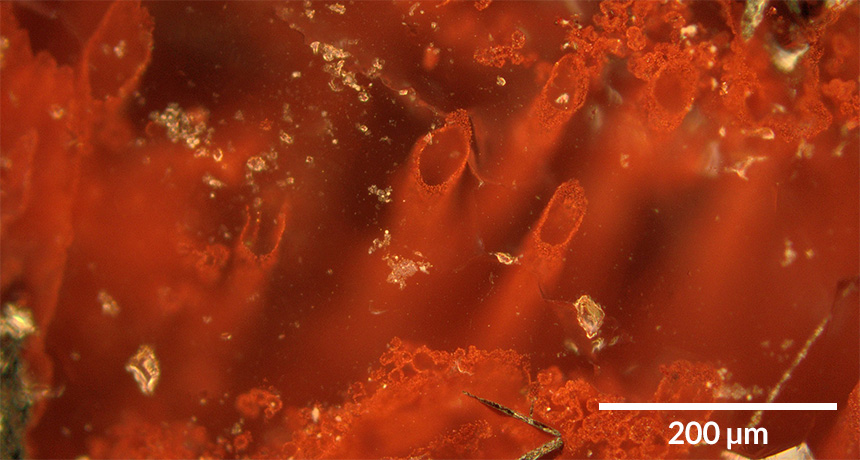Oldest microfossils suggest life thrived on Earth about 4 billion years ago

Tiny, iron-rich fossils exhumed from the depths of an ancient ocean could reveal the cradle of life.
These micrometer-scale structures are probably remnants of microorganisms that once lived amidst ancient hydrothermal vents, researchers suggest March 1 in Nature.
“In a nutshell, what we’ve found are the oldest microfossils on Earth,” says study coauthor Matthew Dodd, a biogeochemist at University College London. The rocks that hold the fossils came from Quebec and date to somewhere between 4.28 billion and 3.77 billion years old — when Earth was still a baby. The next oldest microfossils reported are just under 3.5 billion years old, though their validity has been debated (SN: 2/8/14, p. 16).
If Dodd’s structures truly are remnants of microbes, “it’s fantastic. I love it,” says astrobiologist Martin Van Kranendonk of the University of New South Wales in Sydney. But he’s not convinced. In fact, he says, “there’s just not definitive proof that any of the textures or the minerals or features they have is unique of life.”
Claims of early life are frequently fraught with controversy. For one, says Dodd, “these are big claims — these are our origins.” And scientists studying early life typically don’t have a lot to work with. It’s not like they’re looking at dinosaur bones. In billions-of-years-old microbes, obvious cellular bits and other familiar flags of life have often been stripped away. And in Earth’s oldest rocks, extreme heat and pressure can cook and squash any remnants of life beyond recognition.
So researchers rely on chemical tests and analyses of rock patterns and textures — which are sometimes microscopic — to amass different lines of evidence. Last year, Van Kranendonk and colleagues reported evidence of ancient microbial structures in 3.7-billion-year-old rocks from Greenland (SN: 10/1/16, p. 7).
Though those structures, called stromatolites, may be similar in age to Dodd’s microfossils, they came from an entirely different environment: shallow marine waters, perhaps touched by sunlight. Microbes thriving in two different environments so early in Earth’s history would mean that life arose and diversified quickly, Dodd says. “Life didn’t really struggle to get a foothold.”
His team looked at jasper rocks believed to be the leftovers of matter once belched out of hydrothermal vents, and then rained down on the seafloor. The researchers spotted narrow tubes and filaments of the iron-rich mineral hematite that resemble those made by bacteria today, Dodd says. Specks of iron clung to the sticky surface of the ancient microbes, forming a kind of armored coat that preserved the organisms’ shapes, he says.
Dodd’s team also uncovered other hints, including a carbon signature of life and minerals such as apatite linked to biological activity. Taken together, the hints add up to life, he says. “There’s no other mechanism that can explain all of these observations.”
Biology is indeed one possible explanation, says astrobiologist Abigail Allwood of NASA’s Jet Propulsion Laboratory in Pasadena, Calif. “But the evidence could equally be interpreted as non-biological.”
Each line of evidence, she points out, reflects processes that could have actually occurred at different times, layering potential clues in a way that looks biological, but really isn’t. “You can’t just wave your arms and say this all happened together,” she says.
Paleobiologist David Wacey of the University of Western Australia in Crawley agrees that “the individual lines of chemical evidence are not particularly strong.” But combined with the microstructures, he says, the authors come up with a “pretty convincing biological scenario.”
Wacey expects the Quebec rocks to now be scrutinized in great detail. “There will, no doubt, be arguments,” he says. But the study may revitalize the case for hydrothermal vents as a potential birthplace for life.